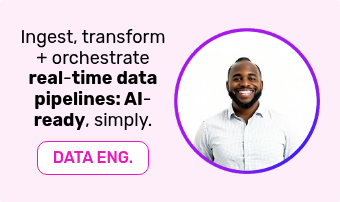Industrial pumps are essential components of a wide range of industrial processes. They play a critical role in delivering fluids and gases, such as water, oil, and chemicals throughout a facility, however managing and maintaining these pumps can be a complex and time-consuming task.
IoT, machine learning, and AI technologies can help - a lot. In this article, we'll explore how these technologies can be used to improve how you manage industrial pumps.
IoT: enabling remote monitoring and predictive maintenance
One of the significant challenges in managing industrial pumps is the need for frequent monitoring and maintenance. Traditional methods rely on periodic inspections or manual checks, which can be time-consuming and expensive. However, the Internet of Things (IoT) technology has changed this scenario significantly.
IoT-enabled industrial pumps come with sensors (or can be retro-fitted with IoT devices that do the same thing) that can continuously monitor various parameters such as flow rate, pressure, temperature, and vibration. These sensors transmit real-time data to a centralised IoT Solution (built on an integrated platform, such as our hybrid iPaaS, Data, ETL, IoT, ETL, BI, App Development + PaaS platform), which can be accessed remotely via the cloud. As a result, plant managers and maintenance teams can monitor the performance of pumps in real-time, from anywhere, at any time.
This capability of IoT technology and the sophistication of advanced, integrated platforms opens up the possibility of predictive maintenance. Predictive maintenance is the practice of using data analysis and machine learning algorithms to predict when a pump is likely to fail. By analysing the data collected from IoT sensors, systems and other integrated data sources, machine learning algorithms can detect early signs of wear and tear or other issues that may cause a pump to malfunction.
As a result, maintenance teams can proactively address potential problems before they become critical. Predictive maintenance can save time and costs associated with unplanned downtime and emergency repairs. It also improves the reliability and longevity of industrial pumps.
Machine learning: optimising pump performance and energy efficiency
Machine learning is another technology that can improve the performance and efficiency of industrial pumps.
For example, machine learning algorithms can analyse the data collected within the IoT solution to detect patterns in the data, identifying the optimal pump speed or flow rate for a particular process. By adjusting the pump speed or flow rate to the optimal level, it is possible to reduce energy consumption significantly, which not only saves costs, but also improves the overall sustainability of industrial processes.
Machine learning can also be used to predict the performance of pumps under different operating conditions. For example, by analysing the data collected from pumps operating at different temperatures, machine learning algorithms can predict how the pump's performance may change as the temperature changes. This information can be used to optimise the pump's performance, improve its efficiency, and prevent potential failures.
AI: automating pump maintenance and repairs
Artificial intelligence (AI) is a technology that can be used to automate maintenance and repair processes for industrial pumps. AI-powered systems can automatically detect faults, diagnose the issue, and recommend the appropriate action.
For example, an AI system can analyse data housed in your integrated data, AI + IoT platform or solution to detect an unusual vibration pattern in a pump. The AI system can then use this information to diagnose the issue and recommend the appropriate maintenance action, such as replacing a faulty bearing. This can significantly reduce the time and costs associated with manual fault detection and diagnosis.
AI can also be used to improve the repair process. For example, an AI system can use computer vision technology to guide a maintenance technician through the repair process step-by-step using augmented reality or detailed instructions, making the repair process more efficient and faster.
Conclusion
As these technologies continue to evolve and become more sophisticated, we can expect to see even more improvements in how industrial pumps are managed.
As well as giving real-time transparency as to how pumps are performing - even in remote locations - the combination of IoT and AI can enable autonomous pump maintenance and repairs, improve performance, as well as improve the safety of industrial processes by ensuring that key assets don't fail without warning.
It's important to note that implementing these technologies requires a significant investment in hardware, software, and expertise. However, the benefits of using these technologies, including improved efficiency, reduced costs, and increased safety, often make the investment worthwhile.
Rayven offers a range of fast-to-deploy and affordable range of prebuilt industrial IoT pump solutions - built on our world leading hybrid iPaaS, Data, ETL, IoT, ETL, BI, App Development + PaaS platform - and how they can enable your business to improve performance, reduce energy consumption, and predict future needs, simply. Speak to us today.




















































